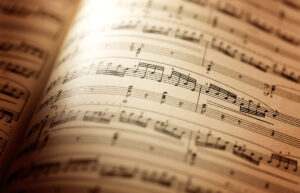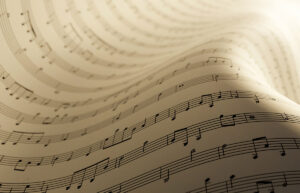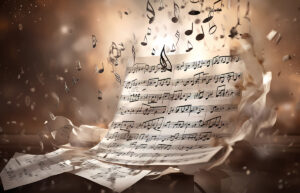What is Chamber Music: Types, Instruments & Famous Chambers

Embark on a journey through the enchanting realm of chamber music. From its Renaissance origins to the influential Classical era, we delve into the evolution of this genre. Explore the diverse ensembles like string quartets and wind quintets, and learn about the instruments that define them. Discover how chamber music remains relevant in contemporary settings, with modern elements and collaborations across genres. Uncover the genius of renowned composers like Mozart, Beethoven, Schubert, Brahms, and Shostakovich, who shaped the course of this musical tradition. Join us as we unravel the magic and history of chamber music, answering common questions along the way.
Welcome to TheDemoStop, now join the community!
Connect with artists, fans and producers around the world.
What is chamber music?
Chamber music, a subset of classical music, is composed using a small group of instruments with the intent of being performed in a chamber or small hall, in contrast to orchestral music. Typically, each part is played by a single musician, fostering intimate and intricate musical interactions. String quartets, piano trios, woodwind quintets, and brass quintets are some of the common chamber music ensembles.
A brief history of chamber music
Renaissance and Baroque origins
Chamber music traces its origins to the Renaissance era, evolving through the Baroque period. During the Renaissance, small groups of instruments and voices were commonly used in domestic settings or at court for entertainment. These early chamber ensembles laid the groundwork for the development of chamber music. In the Baroque era, composers like Johann Sebastian Bach and Georg Philipp Telemann wrote chamber works for small groups of instruments, such as trio sonatas and suites, often performed in intimate settings like salons or private gatherings.
Haydn the inventor
Franz Joseph Haydn, a prominent composer of the Classical period, is often regarded as a key figure in the development of chamber music. He significantly contributed to the evolution of the string quartet and composed numerous works in this genre. Haydn’s experimentation with form, structure, and expressive possibilities expanded the scope of chamber music, influencing later composers.
The string quartet grows in prominence
The string quartet, consisting of two violins, a viola, and a cello, emerged as one of the most prominent and celebrated forms of chamber music in the Classic period. Composers such as Haydn, Mozart, and Beethoven significantly contributed to the string quartet repertoire, elevating its status as a sophisticated and expressive genre. Their compositions in this form demonstrated technical mastery and artistic innovation.
Continued Relevance
Chamber music continued to evolve and remains relevant in the contemporary music scene. While the genre has expanded to include various ensembles beyond string quartets, it’s intimate nature and intricate interplay among performers continue to captivate audiences. Modern composers continue to write chamber music, exploring new sounds, techniques, and forms while honoring the rich tradition established by their predecessors.
Types of chamber music
String quartet
A string quartet consists of two violins, a viola, and a cello. This ensemble is one of the most iconic and esteemed forms of chamber music. Composers like Haydn, Mozart, and Beethoven expanded the range for string quartets, creating a rich collection of works known for their intricacy, emotional depth, and technical brilliance.
Piano trio
A piano trio typically comprises piano, violin, and cello. This ensemble allows for a diverse interplay between the piano and the two string instruments. Composers throughout history, including Haydn, Beethoven, and Schubert, have contributed significant pieces to the piano trio repertoire.
Wind quintet
A wind quintet consists of a flute, oboe, clarinet, bassoon, and horn. Each instrument contributes unique timbres and characteristics, allowing for a wide range of expressive possibilities. Composers have written numerous works for wind quintets, showcasing the ensemble’s versatility and blending of different wind instruments.
Brass ensemble
A brass ensemble can vary in size and instrumentation but generally includes brass instruments like trumpets, trombones, French horns, and tubas. This ensemble produces a powerful and resonant sound. Brass ensembles perform a diverse repertoire ranging from original compositions to classical and popular music arrangements.
Mixed ensemble
Mixed ensembles refer to chamber groups that combine different families of instruments, such as string and wind instruments, creating varied and distinctive sonic textures. These ensembles can include diverse combinations like a brass and string quintet, woodwind and string trio, or other innovative formations. Composers often explore their compositions’ unique timbral possibilities of mixed ensembles, offering a rich array of musical experiences.
Welcome to TheDemoStop, now join the community!
Connect with artists, fans and producers around the world.
Characteristics of chamber music
Small ensembles
Chamber music is typically performed by small groups of musicians, usually ranging from two to about ten performers. These intimate ensembles allow each musician to play a significant role in the performance, fostering a close musical interaction among the players. With fewer musicians, chamber music often highlights individual contributions, promoting a more personal and collaborative musical experience.
Social origins
Historically, chamber music had social origins, often being performed in intimate settings like salons, homes of aristocrats, or small halls. These settings provided an informal atmosphere where musicians and audiences could engage closely, fostering a sense of camaraderie and connection. The music was often designed for enjoyment among friends and patrons, creating an interactive and social experience.
A vessel for innovation
Chamber music has served as a platform for musical innovation throughout its history. Composers, especially during the Classical and Romantic periods, used chamber ensembles as a testing ground for experimenting with new musical ideas, forms, and techniques. This smaller-scale setting allowed for greater experimentation and exploration of musical expression, leading to groundbreaking compositions and pushing the boundaries of what was thought possible within the genre.
Instruments in chamber music
Strings
String instruments, such as violin, viola, cello, and double bass, are fundamental to chamber music. These instruments form the backbone of many chamber ensembles, like string quartets, string trios, and piano trios. They offer a wide range of expressive capabilities, from delicate and lyrical melodies to rich harmonies and rhythmic accompaniment.
Woodwinds
Woodwind instruments like flute, oboe, clarinet, bassoon, and sometimes saxophone are prevalent in chamber music. They contribute diverse tonal qualities and melodies, often found in woodwind quintets, mixed ensembles, or as individual instruments within larger chamber groups.
Brass
Brass instruments such as trumpet, French horn, trombone, and tuba play a significant role in chamber music. Brass ensembles showcase the power and resonance of these instruments, providing bold and majestic sounds in various chamber compositions.
Keyboard instruments
Keyboard instruments like piano, harpsichord, and organ are essential in chamber music. They often serve as the harmonic foundation, providing accompaniment or taking a leading role in ensembles like piano trios or as continuo instruments in Baroque chamber music.
Percussion
Percussion instruments are less commonly featured in traditional chamber music, but occasionally, they’re incorporated to add rhythmic elements and texture. Instruments like the timpani, snare drum, cymbals, or small auxiliary percussion might be used selectively in certain contemporary chamber compositions.
Electronic instrumentation
While historically uncommon, electronic instruments and synthesized sounds have started to find their way into modern chamber music. Composers sometimes incorporate electronic elements to expand sonic possibilities, blending traditional acoustic instruments with electronic textures and effects.
Vocals
Vocal music is occasionally included in chamber music, featuring solo vocalists or vocal ensembles accompanied by various instrumental combinations. This can range from art song accompanied by piano to vocal chamber music compositions involving a combination of voices and instruments.
Chamber music today
Continued popularity in classical music
Chamber music remains a beloved and vibrant genre within the classical music world. It continues to captivate audiences worldwide through its intimate settings and intricate musical dialogues. Numerous chamber music festivals, concert series, and dedicated chamber ensembles around the globe showcase the enduring appeal of this genre.
Incorporation of modern elements
Contemporary composers and performers of chamber music often incorporate modern elements into their compositions and interpretations. This includes experimenting with avant-garde techniques, exploring unconventional sounds, and pushing the boundaries of traditional chamber music. Composers may integrate contemporary harmonies, extended playing techniques, and innovative approaches to instrumentation, creating a fusion of classical tradition with modern musical languages.
Collaboration with other genres
Chamber musicians frequently collaborate across genres, embracing diversity and exploring musical fusions. Collaborations with jazz, folk, world music, electronic music, and even rock or pop genres have become increasingly common. These cross-genre collaborations lead to innovative projects that blend different musical styles, inviting new audiences and expanding the horizons of chamber music.
Welcome to TheDemoStop, now join the community!
Connect with artists, fans and producers around the world.
Famous chamber music composers
Wolfgang Amadeus Mozart
Mozart, a prolific and influential composer of the Classical era, made significant contributions to chamber music. His compositions for string quartets, piano trios, and other chamber ensembles are celebrated for their elegance, clarity, and emotional depth. Works like his “Haydn Quartets”, “Dissonance Quartets”, and “Piano Quartets” are among his renowned chamber music pieces, showcasing his mastery of form and melody.
Ludwig van Beethoven
Beethoven’s chamber music compositions, spanning the transition from the Classical to the Romantic era, are groundbreaking and innovative. His string quartets, particularly the late quartets, are considered some of the most profound and experimental works in the chamber music repertoire. Beethoven expanded the boundaries of form and expression, infusing his compositions with emotional intensity and structural innovation.
Franz Schubert
Schubert, known for his lyrical melodies and poignant expressions, contributed significantly to chamber music. His compositions for piano trios, string quartets, and piano quintets (“Trout Quintet”) are admired for their melodious beauty, harmonic richness, and emotional depth. Schubert’s chamber works often exhibit his gift for crafting memorable melodies and exploring harmonic nuances.
Johannes Brahms
Brahms, a prominent Romantic composer, left a remarkable legacy in chamber music. His compositions for string quartets, piano trios, and piano quartets are characterized by their structural complexity, lush harmonies, and profound emotional depth. Pieces like the “Piano Quintet in F minor” and the “Clarinet Quintet” demonstrate Brahms’ mastery in balancing classical forms with Romantic expressiveness.
Dmitri Shostakovich
Shostakovich, a 20th-century Russian composer, contributed to the chamber music repertoire with works that reflect his time’s tumultuous historical and political context. His chamber compositions, such as the “Piano Quintet” and the “String Quartet,” particularly the emotionally charged String Quartet No. 8, often blend intense emotional expression, sardonic wit, and profound introspection.
Conclusion
What is chamber music?
Chamber music refers to classical music composed with a small group of instruments intended for performance in a chamber or small hall. It involves intimate musical interactions among performers, typically with one player per part, and includes various ensembles like string quartets, piano trios, woodwind quintets, and brass ensembles.
A brief history of chamber music
Chamber music originated in the Renaissance and evolved during the Baroque period, gaining prominence in small settings. Franz Joseph Haydn was pivotal in its development during the Classical era. The string quartet emerged as a prominent form, while chamber music continued to innovate through various periods, maintaining its relevance in classical music to the present day.
Types of chamber music
- String Quartet
- Piano trios
- Wind Quintet
- Brass Ensemble
- Mixed Ensemble
Characteristics of chamber music
Chamber music is characterized by small ensembles rooted in historical and social settings and serves as a vessel for continuous musical innovation, allowing composers to experiment and push creative boundaries.
Welcome to TheDemoStop, now join the community!
Connect with artists, fans and producers around the world.
Instruments of chamber music
Chamber music employs a diverse range of instruments, including strings like violin and cello, woodwinds such as flute and clarinet, brass instruments like trumpet and French horn, keyboard instruments like piano, percussion including timpani and snare drum, electronic instrumentation, and occasional vocals.
Chamber music today
Chamber music remains popular in classical music today, maintaining its appeal through the incorporation of modern elements and frequent collaborations with diverse musical genres.
Famous chamber music composers
- Wolfgang Amadeus Mozart
- Ludwig van Beethoven
- Franz Schubert
- Johannes Brahms
- Dmitri Shostakovich
FAQs
What defines chamber music?
Chamber music is defined by its composition for a small group of instruments, intended for performance in intimate settings such as chambers or small halls, allowing for close musical interaction among performers without a conductor.
What are some common types of chamber music ensembles?
- String quartet
- Piano trio
- Wind quintet
- Brass ensemble
- Mixed ensemble
What are some characteristics of chamber music?
Chamber music stands out for employing small ensembles, rooted in historical social settings, and acting as a platform for ongoing musical innovation.
Who are some famous composers of chamber music?
- Wolfgang Amadeus Mozart
- Ludwig van Beethoven
- Franz Schubert
- Johannes Brahms
- Dmitri Shostakovich
What is the significance of chamber music in classical music history?
Chamber music is significant in classical music history for its role in enabling composers to experiment, innovate, and collaborate intimately, leading to diverse musical expressions and repertoire.
Is chamber music a style?
Chamber music is not a specific style but rather a genre characterized by compositions for small groups of instruments intended for intimate performances in chamber settings. It encompasses various styles and forms across different historical periods within classical music.
What instruments play in chamber music?
Chamber music encompasses a variety of instruments, incorporating strings like violin and cello, woodwinds such as flute and clarinet, brass instruments like trumpet and French horn, keyboard instruments like piano, percussion including timpani and snare drum, electronic instrumentation, and sporadic use of vocals.
What are the features of chamber music?
Chamber music features small ensembles, intimate performances, close musical interaction, emphasis on individual contributions, and historically a platform for musical innovation.
Why do people like chamber music?
People appreciate chamber music for its intimate settings, intricate musical dialogues among performers, emotional depth, diverse ensemble combinations, and the close connection it fosters between musicians and audiences.































































